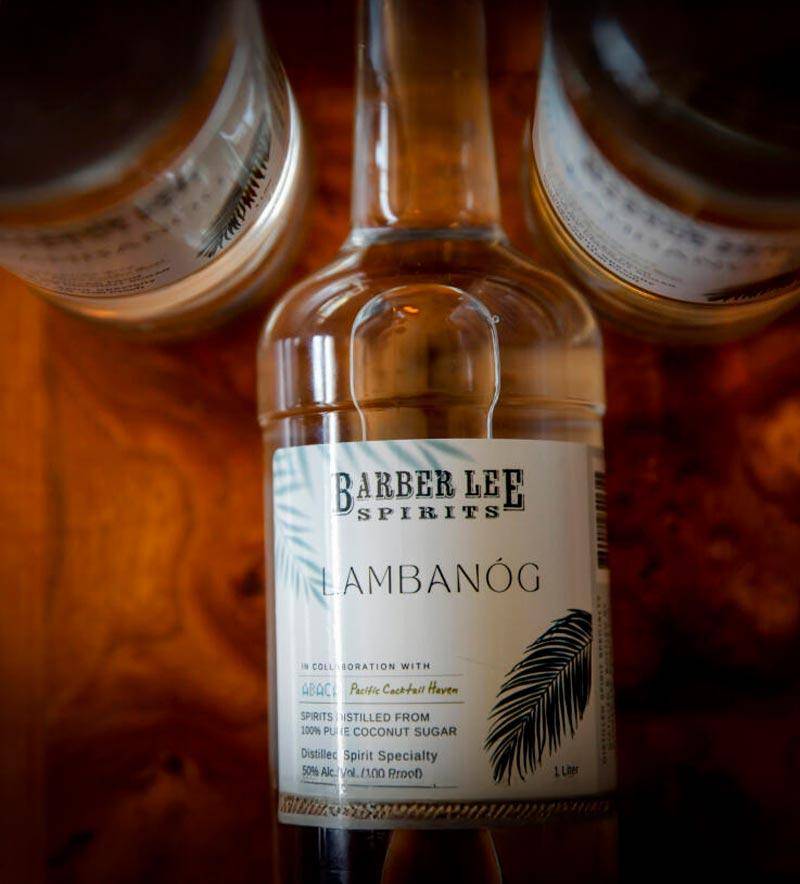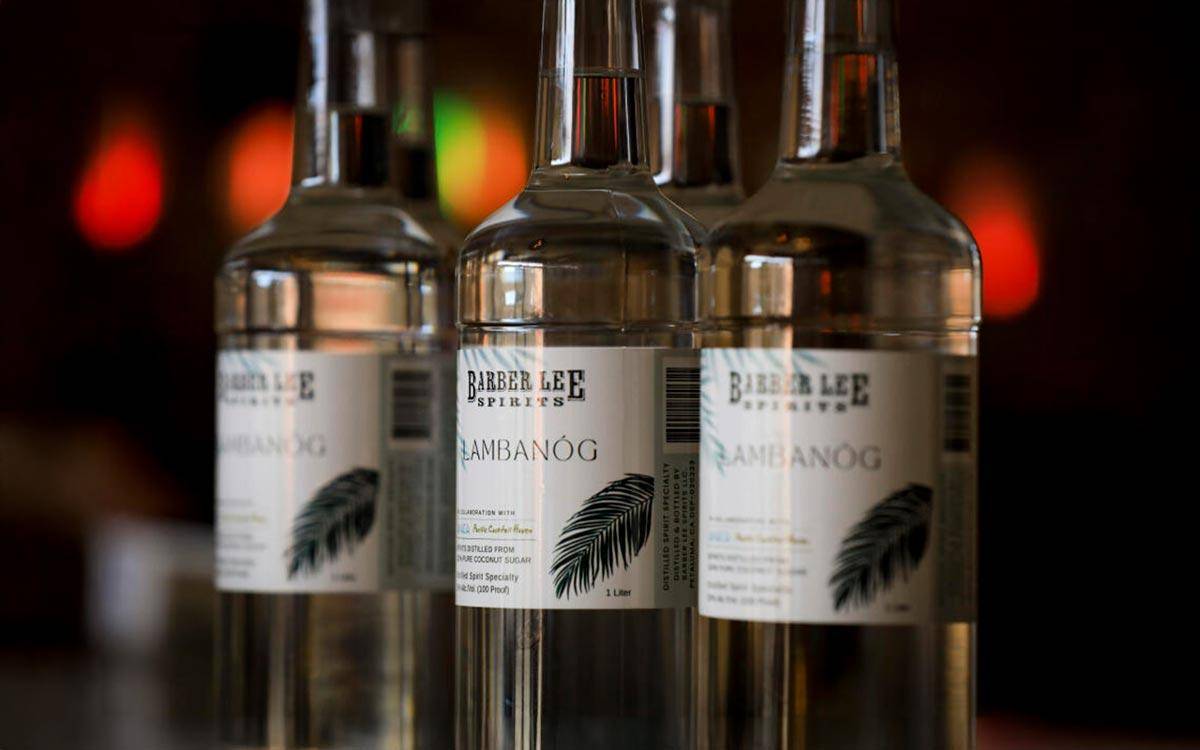How many of you guys are familiar with, Lambanog? Probably not many unless you have traveled to the Philippines or have some Filipino friends, but that's about to change. I'm extremely passionate about the history of alcoholic spirits and especially when it connects parts of the world in new ways. Now some of you may be wondering why Lambanog is something that I am so eager to share with you ... after all .. for many folks this is simply known as "Filipino Vodka" but without the distillation heritage of pre-colonial Philippines, Tequila may never have become what we know and love today. So let's raise our glasses to our seafaring Filipino friends ... Mabuhay!
- Lambanog is a potent Filipino coconut spirit with a rich cultural heritage and diverse flavor profiles.
- Traditionally produced in Quezon Province, lambanog is made from unopened coconut flower sap.
- The spirit plays a significant role in Filipino gatherings and community events.
- Innovative flavors and blends are expanding lambanog's appeal to adventurous drinkers worldwide.
- American distilleries like Barber Lee Spirits are replicating traditional production methods, increasing global visibility.
Lambanog Historic Roots And Regional Variations
The history of lambanog in the Philippines goes back to the pre-colonial era, when it was used both recreationally and in religious ceremonies and rituals.
As you would expect, this spirit has regional variations that make it a completely different experience - just as Mezcal from Jalisco (tequila) and Sonora (bacanora) are very different experiences too, even though they share a similar heritage and culture.
Lambanog and Nipa Wine From Luzon:
Lambanog originated from Luzon where it is a clear spirit made from pure coconut sap. This is the modern spirit we know today. It is a spirit distilled from the coconut palm that typically has a ABV of between 80-90 proof. Some versions can even exceed 150 proofs after a secondary distillation!
However, like Tuba vs Bahlina, farmers would often consume Nipa Wine, a fermented, but not distilled version after working in the fields since it was a cheap and easy-to-make alcoholic drink. So much so that Spanish settlers and merchants would refer to it as vino de coco or coconut wine.
Bahalina and Tuba From Visayas Isalnds:
Some people consider Bahalina and Tuba to be in the same family as Lambanog since they are both coconut sap-derived alcoholic beverages, but they are actually quite different. You'll notice this immediately upon looking at it since Bahalina and Tuba tends to be milky white or having a red coloring. Upon tasting, you'll also notice a huge difference since while Lambanog is 40-50% alcohol, Bahalina is only 10-13% and the "coconut wine" that it is distilled from, Tuba, is typically less than 4%.
We'll discuss Tuba and Bahalina in the future, but Tuba has a more opaque appearance because it is typically made by mixing the sap with barok, the reddish bark of the mangrove tree. This is done to add color ... but mostly as a preservative since otherwise, Tuba (and Nipa Wine) will go sour quickly unless it is distilled.
Later, during the American colonial period, distillation regulations were introduced, leading to licensed distilleries being established. Home production was prohibited, reducing health risks from methanol poisoning.
Lambanog Production
Producing Lambanog is a fairly simple process but one that has centuries of history and heritage as well as regional and even familial variations.
Collecting Sap From Coconut Palm Trees
Production of this alcoholic liquor starts with climbing coconut trees to collect sap from unopened flowers. When I first started researching Lambanog, I saw some folks saying that it was distilled from coconuts, but this is not true. It is the sap collected from coconut palm trees - not the nut we use for coconut milk.
It's a feat that requires agility and courage, but it's all part of the unique charm of lambanog production. Unfortunately in today's modern world, this process is becoming more rare and even more difficult to do at an industrial scale since there are fewer people experienced enough to do this process manually.
Distilling Coconut Wine To Make Lambanog
Once the coconut sap is collected, it is allowed to ferment either naturally or by adding yeast and the resulting product is a low-alcohol "wine" that is then distilled once or multiple times to create Lambanog.

Traditional Filippino Stills vs European Pot Stills
Appreciating a unique spirit like this requires you to explore the distillation technology used to create it. In this case, the simple, almost rudimentary nature of a traditional Filipino still is critical since it was easy to transfer the technology to the new world and begin distilling agave in Jalisco. This is critical since European-style metal pot stills (and later, column stills) require industrial equipment, while the ones used to create Lambanog and, ultimately, early mezcal are able to be built using readily accessible materials.
A traditional Filipino still used to make Lambanog is a simple, artisanal apparatus crafted from locally available materials like bamboo, clay, or basic metals such as copper. It consists of a basic pot where the fermented coconut sap, or "tuba," is boiled over a wood fire.
The alcohol vapor then rises through a rudimentary bamboo or metal tube and is condensed back into liquid form through a basic cooling chamber, often cooled by running water.
This setup contrasts sharply with a traditional European-style pot still used for whiskey, which is typically made of high-quality copper to help remove sulfur compounds and enhance flavor.
Whiskey pot stills are designed for precise control, featuring a pot with a wide base and a long, swan-necked tube that allows for multiple distillations, capturing complex flavors while removing impurities.
On the other hand, the traditional Filipino still emphasizes simplicity and a raw, unfiltered character.
This ultimately reflects the distinct cultural, technological, and production goals of each spirit.
With that being said, modern Lambanog production, and especially in the United States with products such as the Lambanog we tested from Barbar Lee Spirits, it is typically made with modern equipment and safety regulations.
The collected sap is then fermented into "coconut wine" and then distilled where it's heated in large pans, invoking a dance of vapors that are then cooled and collected. This process births lambanog, an exotic spirit with an alcohol content of 40%-45%.
This intricate process is mainly carried out by small-scale cottage industries nestled in Southern Tagalog regions.
These production houses, employing between 4 to 25 workers, serve as the beating heart of the lambanog tradition. Over centuries, they've evolved, incorporating flavors like mango, blueberry, and cinnamon, ensuring lambanog continues to captivate and connect us to the vibrant Filipino culture.
Barber Lee Spirits Lambanog: Bringing a Traditional Filipino Spirit to California
Barber Lee Spirits, a distinguished craft distillery based in the heart of Sonoma County, California, is proud to introduce Barber Lee Spirits Lambanog, one of the few Lambanogs produced in the United States. Crafted from palm sugar, this unique spirit captures the essence of a centuries-old Filipino tradition while offering a fresh experience for American palates.
Barber Lee Spirits Lambanog is characterized by its smooth, velvety texture, rich caramel, and toasted coconut notes, along with subtle hints of tropical fruit that add complexity to every sip. It’s a meticulously crafted spirit, produced at Barber Lee’s grain-to-glass distillery, where every step—from fermentation to distillation—is carefully controlled to ensure exceptional quality.
Lambanog Food Pairings and Cocktail Inspiration
I love Filippino food - while most Americans probably aren't that familiar with the cuisine beyond Joli Bee and possibly lumpia, you really should try it sometime.
Lambanog Food Pairing Ideas
Despite being referred to sometimes as "Philippines Vodka", lambanog has a distinct coconut aroma and flavor that can complement food very nicely. Here are some food pairing ideas to complete the experience.
- Grilled Seafood (Inihaw na Isda or Pusit): Lambanog pairs beautifully with Filipino grilled seafood dishes like Inihaw na Isda (grilled fish) or Inihaw na Pusit (grilled squid), as its crisp, slightly sweet profile complements the smoky, savory flavors from the grill.
- Spicy Filipino Dishes: Dishes such as Bicol Express (spicy pork stew with coconut milk) or Adobo (meat marinated in vinegar, soy sauce, and garlic) work well with Lambanog, as its bold flavor and clean finish balance out the heat and richness.
- Tropical Fruits and Desserts: Fresh tropical fruits like mango, pineapple, or coconut-based desserts (such as Bibingka or coconut rice cakes) enhance the natural fruit notes of Lambanog and offer a sweet, refreshing contrast.
Lambanog Cocktail Ideas
When crafting Lambanog cocktails, it's essential to embrace the spirit's unique profile, which is typically clear, slightly sweet, and carries a bold, earthy flavor with hints of tropical fruit. To complement these characteristics, consider using a range of ingredients that can enhance and balance its natural flavors.
- Citrus Fruits: Bright and fresh ingredients like calamansi, lime, or grapefruit add a zesty balance to Lambanog’s natural sweetness.
- Tropical Flavors: Ingredients like pineapple, mango, and coconut water can create a harmonious blend that highlights its island origins.
- Spices and Herbs: Ginger, lemongrass, or chili offer an adventurous twist with a bit of heat and spice that pairs well with Lambanog's rustic edge.
Given Lambanog's relatively high proof, simple cocktails often work best, allowing the spirit to shine without overwhelming complexity. Here are a few ideas:
- Lambanog Mojito: Mix with fresh mint, lime juice, sugar, and soda water for a refreshing cocktail that plays up Lambanog’s natural sweetness.
- Filipino-Inspired Paloma: Combine Lambanog with calamansi juice and soda water for a light and citrusy drink with a unique tropical twist.
- Straight-Up Sipper: Serve neat over ice with a splash of coconut water or a twist of lime for a simple, refreshing taste of the Philippines.
These tips offer a range of ways to enjoy Lambanog, celebrating its unique flavor profile while keeping the cocktails approachable and enjoyable.
photo credits: CRISSY PASCUAL/ARGUS-COURIER STAFF provided by Barber Lee Spirits
